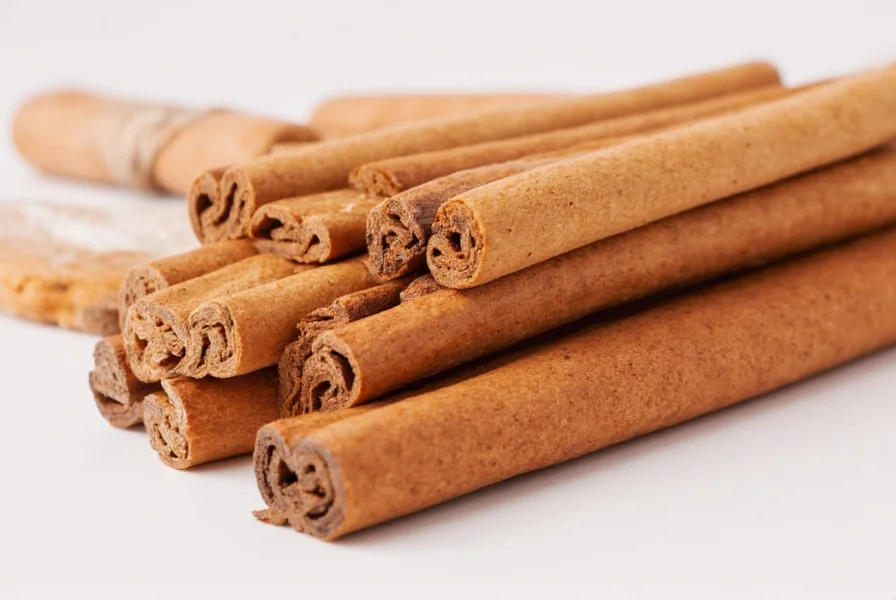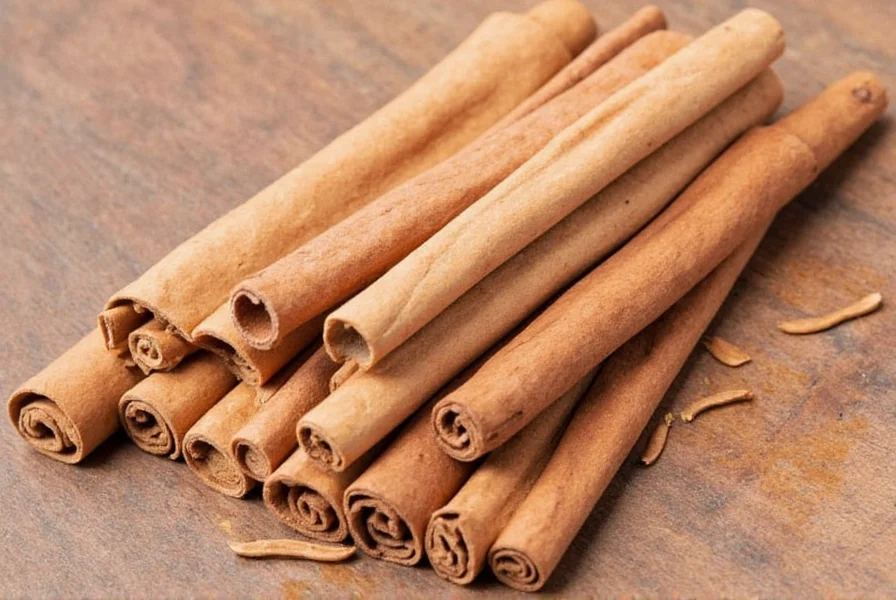Many people wonder can you eat a stick of cinnamon after seeing the infamous cinnamon challenge go viral. The short answer is technically yes, but it's not advisable or safe to consume a dry cinnamon stick whole. Understanding the difference between using cinnamon sticks properly in cooking versus attempting to eat them dry is crucial for your health and safety.
What Exactly Is a Cinnamon Stick?
Cinnamon sticks, also known as cinnamon quills, are the rolled-up bark of cinnamon trees. Unlike ground cinnamon, which has been processed into a fine powder, cinnamon sticks maintain their woody, fibrous structure. The two main varieties are:
| Type | Source | Coumarin Content | Common Uses |
|---|---|---|---|
| Cassia | China, Indonesia | High | Most common in US supermarkets |
| Ceylon | Sri Lanka | Low | Premium culinary applications |
Why Eating a Dry Cinnamon Stick Is Dangerous
The viral cinnamon challenge dangers demonstrate exactly why consuming dry cinnamon—whether ground or in stick form—is problematic. When you try to eat a dry cinnamon stick:
- Choking hazard - The rigid, woody structure doesn't break down easily in the mouth
- Throat irritation - High concentration of cinnamaldehyde causes burning sensation
- Breathing difficulties - Inhaling cinnamon particles can trigger coughing fits
- Digestive issues - The fibrous material can cause stomach discomfort
According to medical professionals, the cinnamon stick health risks increase significantly when consumed dry because the body cannot properly moisten and break down the woody fibers. The American Association of Poison Control Centers has documented numerous cases of respiratory distress from cinnamon challenges.

Safe Ways to Use Cinnamon Sticks
While eating a dry cinnamon stick isn't recommended, cinnamon sticks are perfectly safe and delicious when used correctly in cooking and beverages. The key difference is proper preparation:
- Infusing liquids - Add to hot tea, coffee, or mulled wine (remove before drinking)
- Simmering in dishes - Use in curries, stews, and rice dishes (remove before serving)
- Flavoring sugar - Bury in sugar container for cinnamon-infused sugar
- Garnishing - Use as a stirrer for hot beverages (don't consume the stick itself)
When used properly, cinnamon sticks release their flavor gradually through heat and moisture, avoiding the concentrated dose of cinnamaldehyde that causes problems when eaten dry. This method of proper cinnamon stick usage allows you to enjoy the flavor without the health risks.
Cinnamon Stick vs. Ground Cinnamon: Understanding the Difference
Many people confuse the risks of eating dry ground cinnamon with cinnamon sticks, but there are important distinctions:
- Cinnamon sticks are harder and more fibrous, making them difficult to chew and swallow safely when dry
- Ground cinnamon is more easily inhaled, causing immediate respiratory irritation
- Both forms contain high concentrations of cinnamaldehyde when dry
- Both become safe when properly incorporated into food or beverages with moisture
The viral cinnamon challenge specifically involves dry ground cinnamon, but attempting to eat a whole dry cinnamon stick presents similar cinnamon stick health risks with additional physical hazards due to its rigid structure.
Special Considerations for Certain Groups
Some individuals should be particularly cautious with cinnamon consumption:
- Children - Higher risk of choking; avoid giving cinnamon sticks as "chew toys"
- People with respiratory conditions - Cinnamon particles can trigger asthma attacks
- Those with liver conditions - Cassia cinnamon contains coumarin which affects liver metabolism
- Individuals on blood thinners - Cinnamon may interact with certain medications

Recommended Cinnamon Consumption Guidelines
For safe enjoyment of cinnamon's flavor and potential health benefits:
- Never attempt to eat dry cinnamon sticks or powder
- Use cinnamon sticks to infuse flavor in liquids or dishes, then remove before eating
- Limited daily intake: 1-2 grams of ground cinnamon or 1-2 small sticks for infusion
- Consider Ceylon cinnamon for regular consumption due to lower coumarin levels
- Always combine with moisture when consuming
When wondering is it safe to eat cinnamon sticks, remember that proper culinary use is perfectly safe, while dry consumption poses unnecessary risks. The key is understanding how to incorporate cinnamon into your diet safely rather than attempting to eat it in its raw, dry form.
Frequently Asked Questions
Can eating a cinnamon stick kill you?
While extremely rare, consuming large amounts of dry cinnamon (including sticks) can cause serious respiratory issues that might be life-threatening, particularly for individuals with pre-existing respiratory conditions. The cinnamon challenge has resulted in hospitalizations but no documented fatalities.
What happens if you accidentally swallow a small piece of cinnamon stick?
Swallowing a small softened piece of cinnamon stick that has been properly cooked or infused in liquid is generally harmless. However, swallowing a dry, hard piece could cause throat irritation or minor digestive discomfort. If you experience breathing difficulties, seek medical attention immediately.
How long should you leave a cinnamon stick in tea?
For optimal flavor without excessive bitterness, steep a cinnamon stick in hot tea for 5-10 minutes. Leaving it longer won't make it unsafe, but may result in a stronger, potentially overpowering flavor. Always remove the stick before drinking to avoid accidental biting or choking.
Is ground cinnamon safer to eat than cinnamon sticks?
Neither form is safe to consume dry in significant quantities. Ground cinnamon poses greater inhalation risks (causing immediate respiratory irritation), while cinnamon sticks present more of a choking hazard. Both are safe when properly incorporated into food or beverages with adequate moisture.
Can cinnamon sticks go bad?
Cinnamon sticks don't spoil but gradually lose potency. Properly stored in an airtight container away from light and moisture, they maintain good flavor for 1-2 years. Discard if they develop mold, become excessively brittle, or lose all aroma. Old cinnamon sticks are still safe to use but will have diminished flavor.











 浙公网安备
33010002000092号
浙公网安备
33010002000092号 浙B2-20120091-4
浙B2-20120091-4